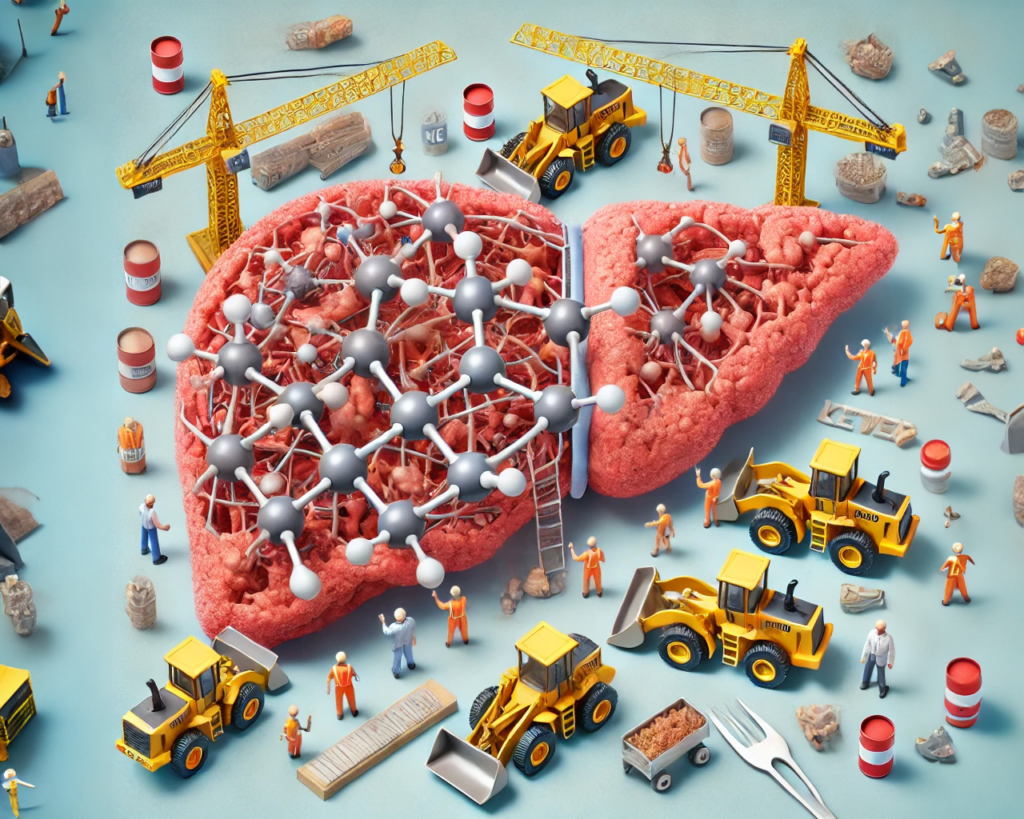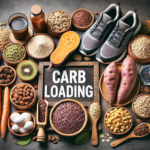💊 What is Ketogenesis?
Ketogenesis is a metabolic process primarily occurring in the liver, where fatty acids are broken down to produce ketone bodies—acetoacetate, beta-hydroxybutyrate, and acetone. These ketone bodies serve as an alternative energy source when glucose levels are low, such as during prolonged fasting, carbohydrate restriction, or intense exercise. If you read my post on lipolysis, you now have a better understanding of where energy comes from during fasting and why is it that we lose fat and muscle while in a catabolic state.
Biochemistry of Ketogenesis
The process begins with the breakdown of stored fats into free fatty acids through a process called lipolysis. These fatty acids then enter the liver, where they are converted into acetyl-CoA, a key molecule in metabolism. Normally, acetyl-CoA would enter the Krebs cycle (a central energy-producing cycle) to generate ATP. However, when glucose is scarce, and insulin levels are low, the Krebs cycle slows down due to a lack of oxaloacetate (another molecule needed for the cycle). This bottleneck causes acetyl-CoA to accumulate, pushing the liver to divert acetyl-CoA into ketogenesis.
During ketogenesis, acetyl-CoA molecules are combined to form ketone bodies. These ketones are then released into the bloodstream and transported to tissues like the brain, muscles, and heart, where they can be converted back into acetyl-CoA and used in the Krebs cycle for energy production. This metabolic shift allows the body to efficiently use stored fat as a primary fuel source, sparing glucose and reducing the need for gluconeogenesis (glucose production from protein breakdown).
Ketogenesis is highly regulated by hormonal signals—for example, while insulin inhibits the process, glucagon promotes it. This interplay ensures that ketogenesis is only active when glucose availability is low, making it a crucial adaptation for survival during periods of food scarcity. In the context of a ketogenic diet, which is high in fats and very low in carbohydrates, ketogenesis is deliberately triggered to shift the body’s metabolism towards fat-burning, providing a steady and efficient fuel source that can also have therapeutic effects, such as reducing seizure frequency in epilepsy or aiding in weight loss.
🤔 Why You Need to Know:
Understanding ketogenesis is essential for grasping how the body adapts to different dietary patterns and energy demands.
By leveraging this metabolic pathway, you can enhance fat burning, improve mental clarity, and sustain energy levels even in the absence of dietary carbohydrates.
Luckily for us, ketogenesis is not only a natural response to fasting or carbohydrate restriction but also a targeted strategy in therapeutic diets for weight loss, and conditions like epilepsy, type 2 diabetes, and metabolic syndrome. Hence, learning how to effectively induce and maintain ketosis can offer a range of health benefits, from weight management to improved metabolic health.
📝 Action Items:
- Monitor Carbohydrate Intake: To induce ketogenesis, reduce your daily carbohydrate intake to 20-50 grams, depending on your individual tolerance and goals. Focus on low-carb vegetables, nuts, and seeds while avoiding sugars and starches.
- Increase Healthy Fats: Incorporate healthy fats like avocados, olive oil, nuts, seeds, and fatty fish into your diet. This supports ketone production and provides a sustained energy source.
- Stay Hydrated and Replenish Electrolytes: Ketogenesis can lead to increased fluid and electrolyte loss. Drink plenty of water and consider adding electrolytes (sodium, potassium, magnesium) to maintain balance and reduce the risk of “keto flu.”
- Monitor Ketone Levels: Use ketone test strips, breath analyzers, or blood ketone meters to track your ketone levels and ensure you’re staying in a state of ketosis, typically aiming for 0.5-3.0 mmol/L in blood ketones.
- Gradually Adapt to Fasting: If incorporating intermittent fasting, start with shorter fasting periods (e.g., 12-14 hours) and gradually increase as your body adapts, to further enhance ketogenesis and metabolic flexibility.
🤯 Trivia:
The presence of ketones in the body was first discovered in the mid-19th century when a German physician, Hermann von Fehling, identified ketone bodies in the urine of diabetic patients. It wasn’t until the early 20th century that researchers recognized the therapeutic potential of ketones, leading to the development of the ketogenic diet as a treatment for epilepsy in children, which remains one of the diet’s most well-documented medical applications.




Comment:
Thank you for this comprehensive guide on ketogenesis and its role in fat burning and
energy production. It’s fascinating to learn about the biochemical
process that occurs in our bodies when we
fast or follow a low-carb diet, and how ketone bodies are produced
to serve as an alternative energy source.
Understanding ketogenesis has certainly helped me
appreciate the benefits of intermittent fasting
and a ketogenic diet, which I’ve been practicing for a few months now.
I’ve noticed an improvement in my mental clarity and energy levels, and I’m pleased
with the weight loss results too.
Your action items are very helpful. I’ve been monitoring my carbohydrate intake,
increasing my healthy fat intake, staying hydrated, and gradually adapting to longer fasting
periods. I’ve also started using ketone test strips to monitor my ketone levels and ensure I’m maintaining
a state of ketosis.
The trivia about the discovery of ketones and the development
of the ketogenic diet was particularly interesting. I’ll definitely check
out the additional resources you’ve provided for further reading.
Thank you again for this insightful post!